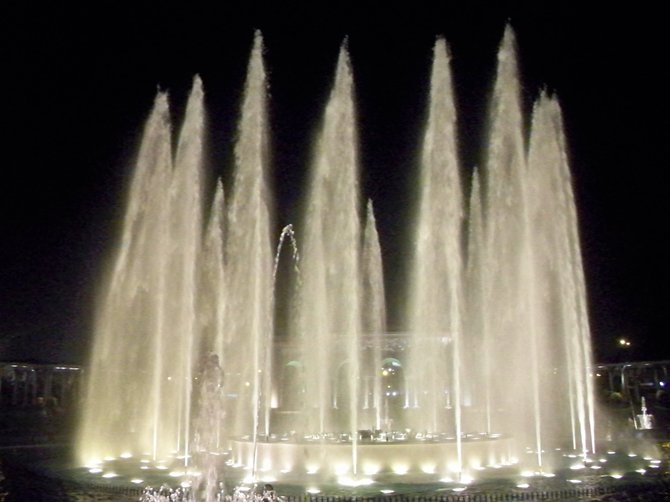 Facebook
Facebook
 X
X
 Instagram
Instagram
 TikTok
TikTok
 Youtube
Youtube

With 9.2 million people, Lima is the fifth-largest city in Latin America behind Mexico City, Rio de Janiero, Sao Paolo and Buenos Aires. The municipality of Lima, Peru, has 43 separate districts, each with its own mayor.
Most days in Lima, the sky is covered in a thick marine layer, with the sun maybe shining through for an hour or two in the afternoon. Taxis comprise roughly 40% of the vehicles on the road at any given time – they can be found in abundance in Lima on any main street. Make sure to settle on price for your destination before getting into the taxi, and don’t be afraid to haggle over the price a little bit.
Buses and smog-producing mini-buses (known as micros) are also easy to find on the main arteries and are a cheaper option to taxis. The micros make stops wherever people want to get on, with a man standing at the door of the micro known as a cobrador, who shouts out where it’s going and collects money from passengers. I’d highly advise against using the micros, though, as they are small and cramped and it’s not very easy to get on and off when you need to. Taxis are a better alternative.
There are a number of fun and interesting things to see and do in Lima. One of my favorites is Parque de la Reserva. The park was recently re-done in 2007 and has 13 of the most beautiful fountains in the world. (It’s currently the world record holder as the largest fountain complex in the world.) At night, the park comes alive with spectacular lighting and music. The main fountain, the Magic Fountain, has a jet that shoots water 80 meters up in the air.
In the middle of the park there’s the Fantasia Fountain, where three times a night is a 30-minute light and laser show. Cost of admission is only 3 soles (about 1 dollar). All of the funds received from admissions go directly back to improving the city’s infrastructure.
In downtown Lima, a must-see for any visitor is the Plaza Mayor. The main plaza of the city includes the home of the President of Peru, City Hall, the Archbishop’s palace, and a very beautiful cathedral. It’s best to visit on a weekend during the day – traffic during the weekdays can be very heavy in the area and the side streets around the square are not very safe at night time.
A few blocks from the plaza is the National Congress building, which you can enter and tour if you like.


With 9.2 million people, Lima is the fifth-largest city in Latin America behind Mexico City, Rio de Janiero, Sao Paolo and Buenos Aires. The municipality of Lima, Peru, has 43 separate districts, each with its own mayor.
Most days in Lima, the sky is covered in a thick marine layer, with the sun maybe shining through for an hour or two in the afternoon. Taxis comprise roughly 40% of the vehicles on the road at any given time – they can be found in abundance in Lima on any main street. Make sure to settle on price for your destination before getting into the taxi, and don’t be afraid to haggle over the price a little bit.
Buses and smog-producing mini-buses (known as micros) are also easy to find on the main arteries and are a cheaper option to taxis. The micros make stops wherever people want to get on, with a man standing at the door of the micro known as a cobrador, who shouts out where it’s going and collects money from passengers. I’d highly advise against using the micros, though, as they are small and cramped and it’s not very easy to get on and off when you need to. Taxis are a better alternative.
There are a number of fun and interesting things to see and do in Lima. One of my favorites is Parque de la Reserva. The park was recently re-done in 2007 and has 13 of the most beautiful fountains in the world. (It’s currently the world record holder as the largest fountain complex in the world.) At night, the park comes alive with spectacular lighting and music. The main fountain, the Magic Fountain, has a jet that shoots water 80 meters up in the air.
In the middle of the park there’s the Fantasia Fountain, where three times a night is a 30-minute light and laser show. Cost of admission is only 3 soles (about 1 dollar). All of the funds received from admissions go directly back to improving the city’s infrastructure.
In downtown Lima, a must-see for any visitor is the Plaza Mayor. The main plaza of the city includes the home of the President of Peru, City Hall, the Archbishop’s palace, and a very beautiful cathedral. It’s best to visit on a weekend during the day – traffic during the weekdays can be very heavy in the area and the side streets around the square are not very safe at night time.
A few blocks from the plaza is the National Congress building, which you can enter and tour if you like.